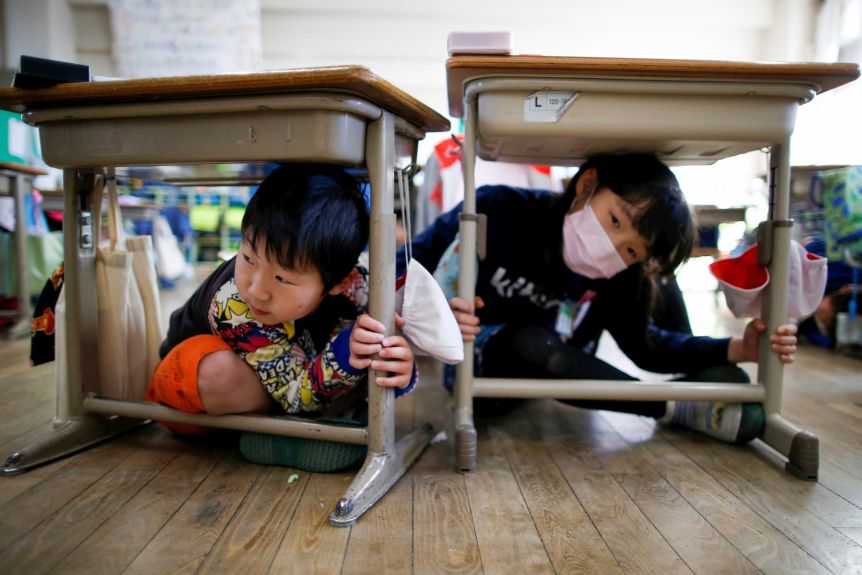Why the impacts of crises and natural disasters vary by country
https://arab.news/z7hrd

In October 1871, a fire broke out in a barn in Chicago, igniting a city-wide blaze that killed almost 300 people, destroyed 17,500 buildings and left more than 100,000 residents homeless. The Great Chicago Fire caused damage worth an estimated $222 million back then (about $4.7 billion today). While there are still many theories pertaining to the cause, it was determined that the fire’s rapid spread was due to the city’s use of wood as its main building material in houses, roads and sidewalks. The flames also spread rapidly because houses were topped with highly flammable tar or shingle roofs, which were extremely dangerous.
A few decades later, in 1906, an earthquake struck San Francisco, destroying more than 80 percent of the city and killing more than 3,000 people. Then-San Francisco Mayor Eugene Schmitz was a controversial figure who was embroiled in corruption cases. In order to save money and pocket government funds, cheap materials were apparently used to build homes (reports determined that trash and newspapers were incorporated into building materials, making them highly faulty).
Disasters hit everywhere, but their impacts are different from one place to another. Some disasters leave hundreds of casualties in their wake, while others barely cause 10. At the risk of sounding reductive, the reasons for this are, of course, not exact in all situations. However, a magnitude 7 earthquake can cause catastrophic damage in one area of the world and only minor damage in another. This is because the context in which the crisis or disaster hits makes all the difference.
Low-income communities and developing countries are usually more susceptible. One cannot forget the tragic 2017 fire that broke out in the 24-story Grenfell Tower in North Kensington, West London, which killed 72 people. Almost as horrific was the fact that images of the blazing building were broadcast live on the news for hours, with harrowing scenes of residents clinging to windows. It is a black mark in London’s history not only for its calamity, but because this fire should not have been so bad. The flames spread up the exterior very quickly because of the building’s cladding, the external insulation and the air gap in between, which enabled the stack effect. Simply put, the Grenfell Tower disaster could have been prevented had it not been for the building’s poor quality materials and construction standards, a lack of investment in council housing for poorer residents, and failures to comply with the regulations.
Disasters cannot be eliminated, especially those caused by Mother Nature. However, various measures are used to minimize the risk. These include early warning systems, strict regulations and oversight, as well as clear instructions and manuals for the public. In countries that have a history of natural disasters, for example, buildings are designed to withstand earthquakes or flooding.
The probability of buildings crumbling to the ground and towers burning at a faster pace in comparison to others depends on where and how they are built. Countries or cities located in high-risk zones and are prone to frequent earthquakes, tsunamis or seasonal fires put in place strict policies and protocols and invest heavily in precautionary measures. These cover everything from specifications on building materials to public manuals on what to do in the case of an incident.
The way most countries respond, react and are impacted by disasters can be measured based on several things. First, the physical infrastructure and how much the country has invested in its development. Second is the establishment of strong institutions with relevant experts that are well equipped to deal with these events. Third is strong leadership, with humility and heart, which is capable of making swift and decisive decisions while managing to show empathy and promote unity with the rest of the country.
A magnitude 7 earthquake can cause catastrophic damage in one area of the world and only minor damage in another.
Asma I. Abdulmalik
A great example here would be Jacinda Ardern, the prime minister of New Zealand. Ardern’s response following New Zealand’s worst ever terror attack — the March 2019 Christchurch mosque shootings — was praised because of her compassion, cultural sensitivity and political determination. On the other hand, Theresa May, then-prime minister of the UK, met with firefighters at the Grenfell Tower site and also met those in charge of the response, but she failed to meet with the victims. She later described her failure: “Although many people did incredible work during and after the fire, it has long been clear that the initial response was not good enough. I include myself in that.”
Finally, it is crucial to be prepared. Japan, for example, does a stellar job of preparing the individual for a crisis. Earthquake and tsunami evacuation points are well established in every neighborhood, local governments send cellphone alerts in the case of an emergency, and all citizens are encouraged to have survival kits in their house with enough supplies to last days. In Japan, every person knows exactly what to do in an emergency.
Disasters are inevitable; however, mitigating their impact is possible. But for these measures to work, you require strong political leadership, effective government agencies, financial resources, experts and planners. Through these strategies, governments can help save lives.
- Asma I. Abdulmalik is an Emirati civil servant and a writer interested in gender and development issues. Twitter: @Asmaimalik









































